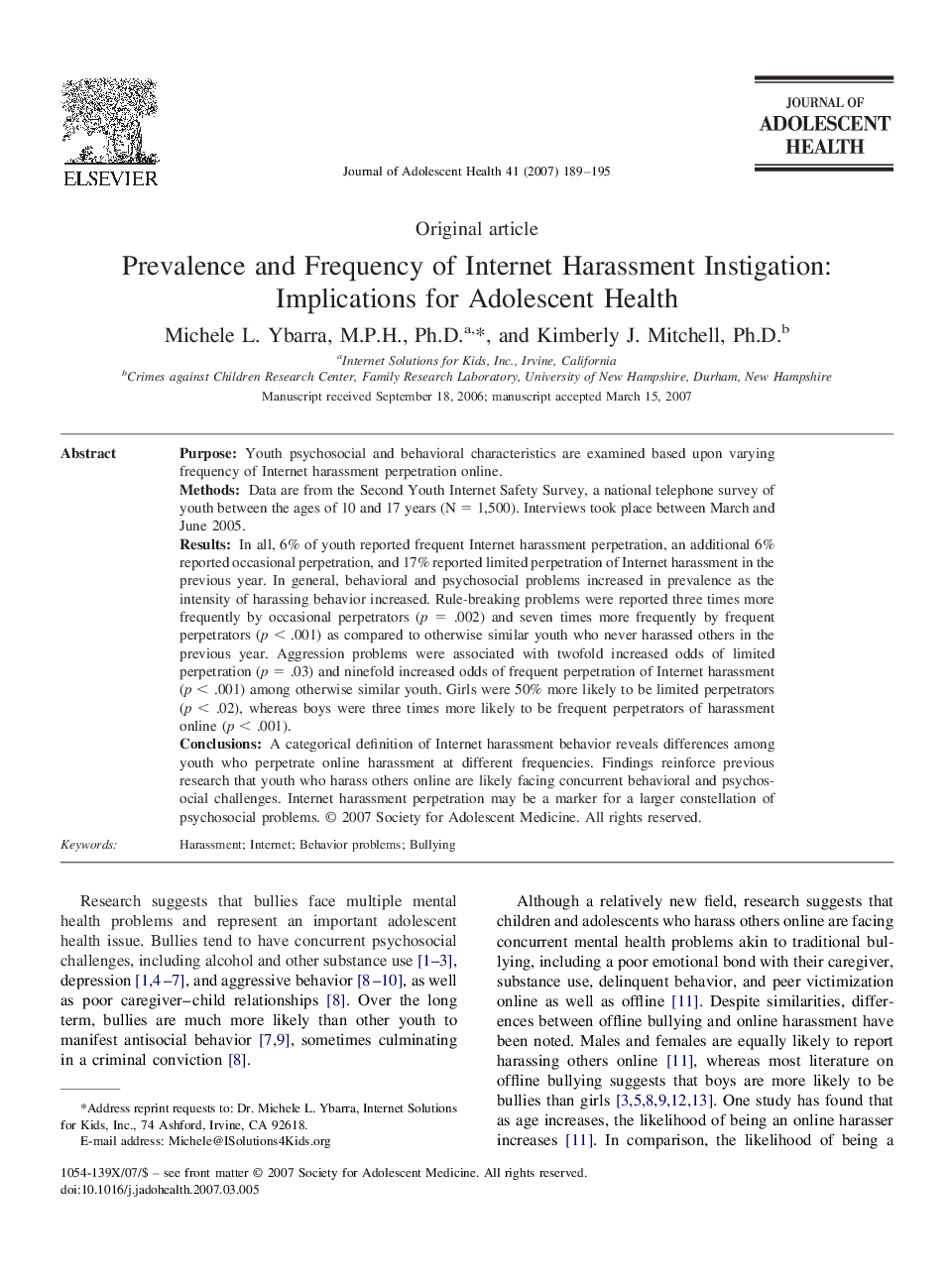| کد مقاله | کد نشریه | سال انتشار | مقاله انگلیسی | نسخه تمام متن |
|---|---|---|---|---|
| 1081199 | 950578 | 2007 | 7 صفحه PDF | دانلود رایگان |

PurposeYouth psychosocial and behavioral characteristics are examined based upon varying frequency of Internet harassment perpetration online.MethodsData are from the Second Youth Internet Safety Survey, a national telephone survey of youth between the ages of 10 and 17 years (N = 1,500). Interviews took place between March and June 2005.ResultsIn all, 6% of youth reported frequent Internet harassment perpetration, an additional 6% reported occasional perpetration, and 17% reported limited perpetration of Internet harassment in the previous year. In general, behavioral and psychosocial problems increased in prevalence as the intensity of harassing behavior increased. Rule-breaking problems were reported three times more frequently by occasional perpetrators (p = .002) and seven times more frequently by frequent perpetrators (p < .001) as compared to otherwise similar youth who never harassed others in the previous year. Aggression problems were associated with twofold increased odds of limited perpetration (p = .03) and ninefold increased odds of frequent perpetration of Internet harassment (p < .001) among otherwise similar youth. Girls were 50% more likely to be limited perpetrators (p < .02), whereas boys were three times more likely to be frequent perpetrators of harassment online (p < .001).ConclusionsA categorical definition of Internet harassment behavior reveals differences among youth who perpetrate online harassment at different frequencies. Findings reinforce previous research that youth who harass others online are likely facing concurrent behavioral and psychosocial challenges. Internet harassment perpetration may be a marker for a larger constellation of psychosocial problems.
Journal: Journal of Adolescent Health - Volume 41, Issue 2, August 2007, Pages 189–195